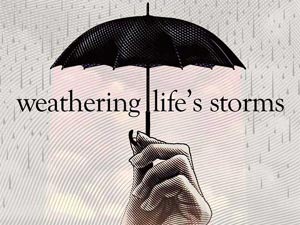 While I was driving on the freeway last week, a car began to cross over into my lane and then—thankfully—the driver spotted my car there at the last minute (my horn honk helped). Then, less than ten minutes later, another “near miss” happened between a couple of cars ahead of me. Whew!
While I was driving on the freeway last week, a car began to cross over into my lane and then—thankfully—the driver spotted my car there at the last minute (my horn honk helped). Then, less than ten minutes later, another “near miss” happened between a couple of cars ahead of me. Whew!
As I continued on my journey, I sensed that drivers seemed less “grounded” than usual. Then, I checked in with myself. I didn’t feel as grounded as usual either. My mind was racing about various international challenges, as well as the myriad of things that were listed on my “to-do” list for the day. Can you relate?
After realizing I was feeling “worried about the world,” I took a couple of slow, deep breaths and brought my focus into the present moment. Still keeping my eyes clearly focused on the road ahead, I opened my narrow focus (tunnel vision) to allow in the beautiful green hills on either side of the highway. A sigh of relief flowed from my lips as I expanded my perspective.
Next, I brought my attention to my hands, which were intently holding the steering wheel. I tightened and then loosened my hands slightly to find a comfortable, but competent, grip. Ah-h-h…another bit of stress dissipated. Shifting my focus back to my thoughts, I noticed how “busy” my mind still was. So, I reminded myself that there wasn’t anything I could do in that moment to help with any of the world’s challenges…except to stay grounded (breathing slowly and deeply) as I attentively moved forward on the freeway.
With all of the challenges in our world these last few months, it’s no surprise that many people have experienced higher levels of stress than usual. And, keep in mind that it’s normal to move into fight, flight, or freeze responses when stressed. In fact, during prehistoric times, the fight-flight-freeze responses were critically needed to ensure survival.
In contemporary life, however, these stress responses are only occasionally needed. Nonetheless, our primitive brains haven’t evolved fast enough to know that saber-toothed tigers are no longer a constant threat. With that in mind, below are seven suggestions I often offer clients to assist them in interrupting unproductive “worry cycles” to counter their stress responses.
Seven Suggestions for Weathering Storms
- Tap into your mind-body inner resources, such as: problem-solving abilities, intuition, courage, spiritual faith, hope, communication skills, computer skills, physical strength, etc.
- Remind yourself of other storms you’ve faced and identify what positive resources helped you through those challenging times.
- Ground yourself to Mother Earth. Take healthy breaks from “being in your head” and inhabit your body from head-to-toe. For example, gift yourself with quiet, meditative moments that include deepening your breathing into your belly while envisioning a grounding cord that extends like a tree root from the base of your spine…deep down into the earth.
- Tap into positive outer resources, such as: supportive family members, loving friends, and mind-body-spirit professionals (if needed).
- Be mindful how you invite “world news” into your life. For example, if you are media sensitive and feel overwhelmed after seeing catastrophic images during television news, then seek other, less intense, forms of news media to keep yourself informed.
- If your “world” currently feels balanced, then consider taking action beyond yourself and your family…to help someone less fortunate.
- Compassionately love yourself and others throughout the duration of the storm.
When weathering life’s storms, it is important to focus on solutions rather than over-focusing on problems. Being solution-oriented will help you avoid becoming stuck in stressful cycles of fight, flight, or freeze responses. And a gentle reminder: check to ensure that your earthquake kit is up to date. If it isn’t, then consider contacting Steve Carlson for various emergency preparedness supplies at www.yoursafetyplace.com. To receive a 20% discount on your order, type-in: SC20 in the “discount code box” at checkout.
Finally, keep coming back to the present moment where you can spend time and energy devoted to taking good care of yourself, your loved ones, and the world at large. Because the truth is, we’re not alone…we are all in this together.
Join Trina and attend her upcoming Walnut Creek workshop: Managing Emotional and Compulsive Eating for Women—John Muir Women’s Health Center: Thursday, June 2, 6:30-8:30 pm. Cost: $40 (Includes Weight Loss: 2-CD set). Seats are limited—register today for this inspiring workshop: (925) 941-7900 option 3. For more info, go to www.TrinaSwerdlow.com & click on “Private Sessions & Workshops”.
Certified Clinical Hypnotherapy services in California can be alternative or complementary to licensed healing arts, such as psychotherapy.
Trina Swerdlow, BFA, CCHT, is a Certified Clinical Hypnotherapist, an artist, and the author of the 2-CD Set, Weight Loss: Powerful & Easy-to-Use Tools for Releasing Excess Weight. Her artwork and personal profile are included in Outstanding American Illustrators Today 2. She is the author and illustrator of Stress Reduction Journal: Meditate and Journal Your Way to Better Health. Trina has a private practice in downtown Danville. She soulfully shares her creative approach to personal growth and passionately supports her clients in reaching their goals. You can reach her at: (925) 285.5759, or info@TrinaSwerdlow.com.
Leave a Reply